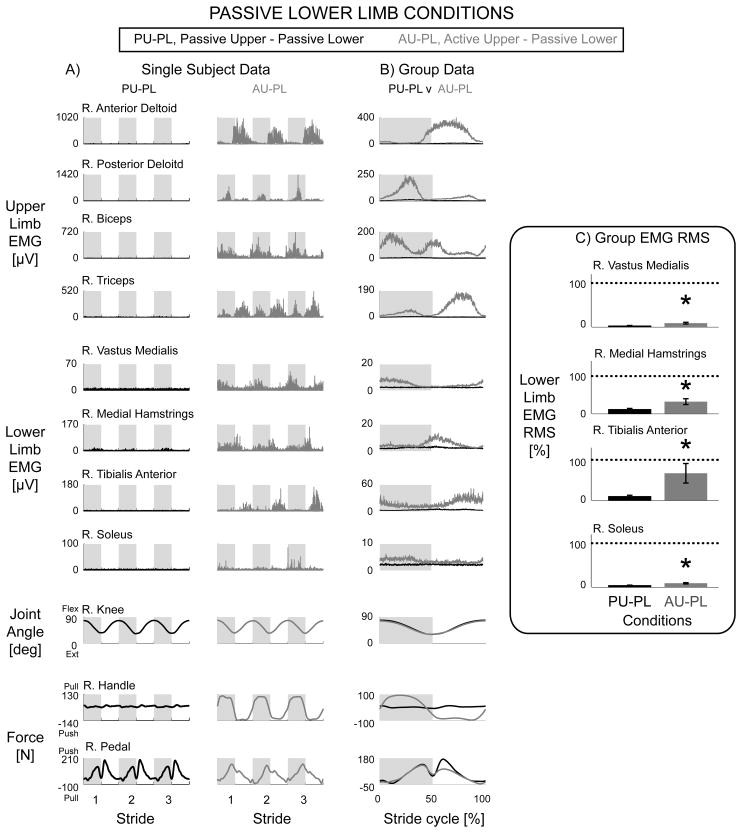Figure 2.
Data from the right limbs for the passive lower limb conditions, Passive Upper & Passive Lower (black) and Active Upper & Passive Lower (grey). Representative single subject data (A) and group EMG mean profiles (B) show minimal EMG activity in the Passive Upper & Passive Lower condition while the Active Upper & Passive Lower condition had rhythmic bursts of EMG. Group EMG RMS amplitudes with standard error bars (C) for Active Upper & Passive Lower were significantly greater than Passive Upper & Passive Lower for the vastus medialis, medial hamstrings, tibialis anterior, and soleus muscles (* significantly different, AU-PL > PU-PL, THSD P < 0.05). Dotted line equals 100%. Note different y-axes between A and B. The knee joint angle profiles and passive pedal forces were similar between the two conditions. Handle forces during the Active Upper & Passive Lower condition had a clear increase in pulling force during the upper limb flexing (and lower limb extending) phase and pushing force during the upper limb extending (and lower limb flexing) phase.

